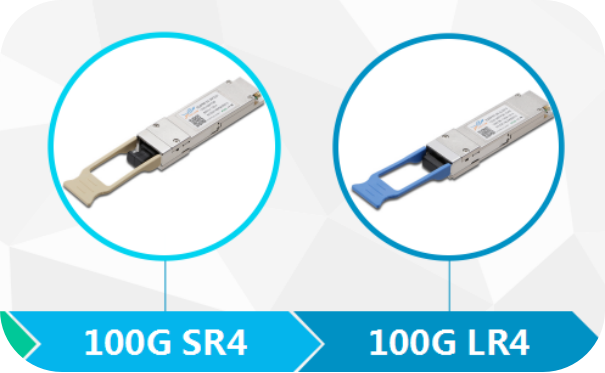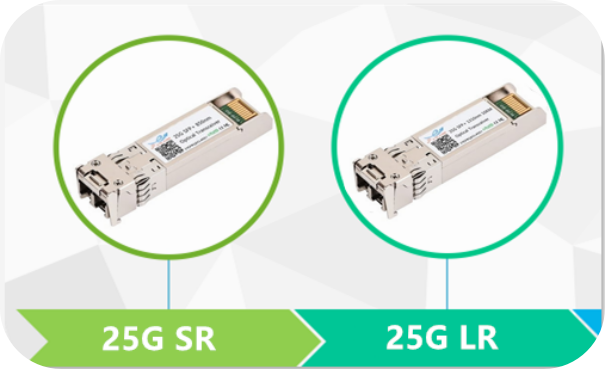
Who will become the market favorite between 200G and 400G?
With the rapid development of optical communication and the Internet in recent years, users' demand for the network has also increased rapidly, which has led to the rapid growth of the traffic of the telecommunications backbone network by 50% to 80% per year. In order to adapt to the development trend of 10g-40g-100g or 10g-25g-100g in the network market, 100G optical module came into being and rose rapidly in the market, playing a vital role in the construction of 100G network systems.
According to different packaging methods, 100G optical module can be divided into CFP/CFP2/CFP4/CXP and QSFP28 optical module.The QSFP28 optical module has the same design concept as the QSFP optical module, with four transmitting and receiving ports, and the transmission rate of each channel is up to 28Gbps.It has the advantages of small size and power consumption less than 3.5w, which attracts more attention. It is currently the mainstream packaging method of 100G optical module, such as 100G QSFP28 optical module.

Although 100G optical modules have become mainstream in the market, the requirements for bandwidth, port density, and system energy consumption are still increasing, which further pushes technology forward to 200G, 400G or higher systems. 400G optical module types, including CDFP, CFP8, QSFP-DD and OSFP. QSFP-DD is currently the more popular type. It is basically the same as QSFP28 except that its size and length are slightly longer,However, there are two rows of goldfinger on both sides of the upper and lower sides, which can double the number of signals without increasing the width of modules.
Compared with 100G, the 400G system can further increase the network capacity based on 100G and reduce the transmission cost per bit. Because the four-channel parallel architecture is the most cost-effective high-bandwidth optical packaging platform in the 40G/100G product direction, it will be the most cost-effective for the future 4x50Gx2 architecture or 4X100G architecture.

The 400G module also supports 200G applications, but the module type for 200G applications is "MicroQSFP".MicroQSFP has 4 differential pairs to support the current 100G application. Compared with the 100G QSFP28 module, it is much smaller.But its panel density increased by 33%, which will have a large advantage in volume and panel density. At the same time, it comes with a heat sink, which is better in terms of heat dissipation.
Previous :
Installation process of CFP2 optical moduleNext :
Answers for Copper-T RJ45 ModulesCategories
New Blog
Tags
© Copyright: 2025 ETU-Link Technology CO ., LTD All Rights Reserved.

IPv6 network supported
Friendly Links:
易天官网